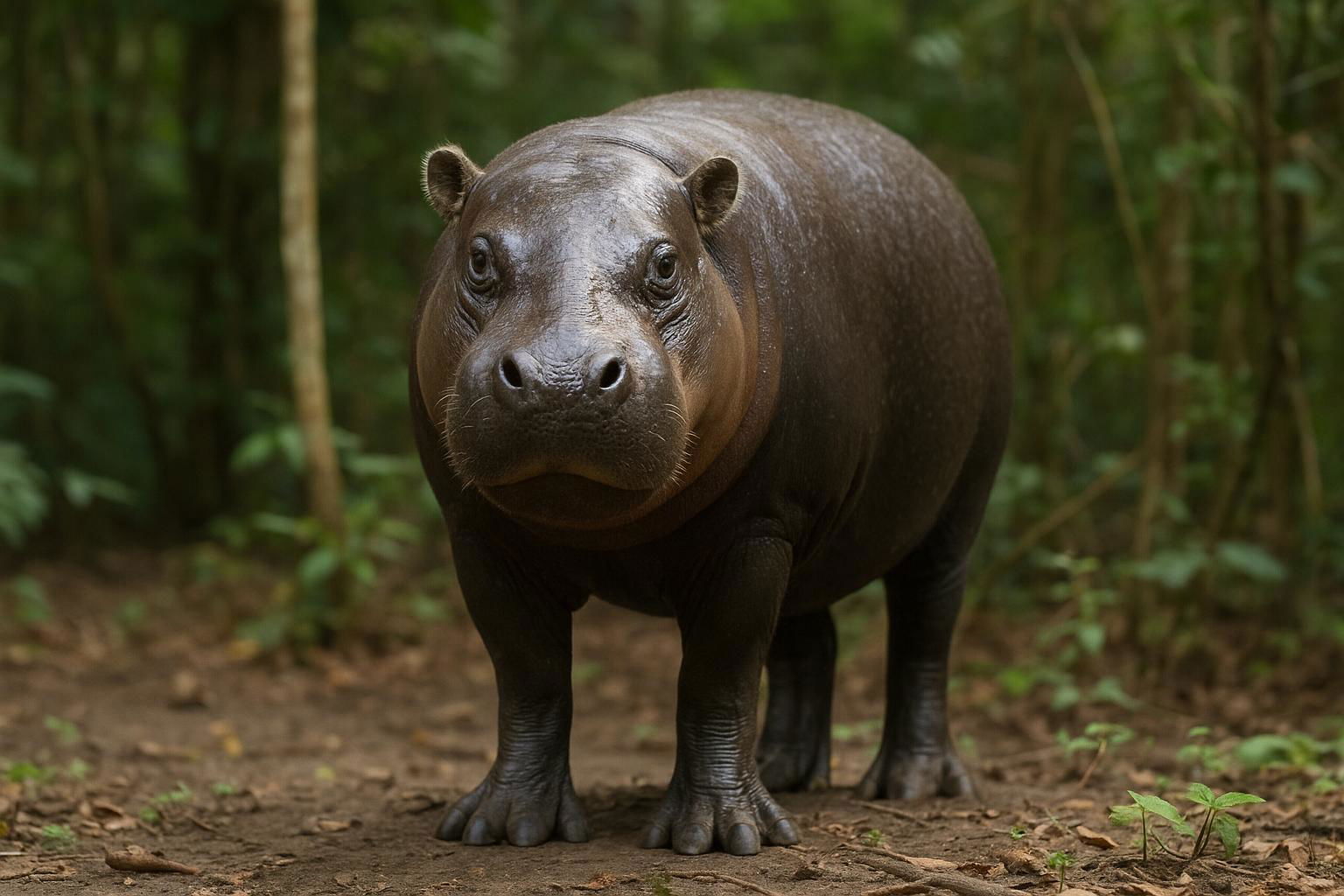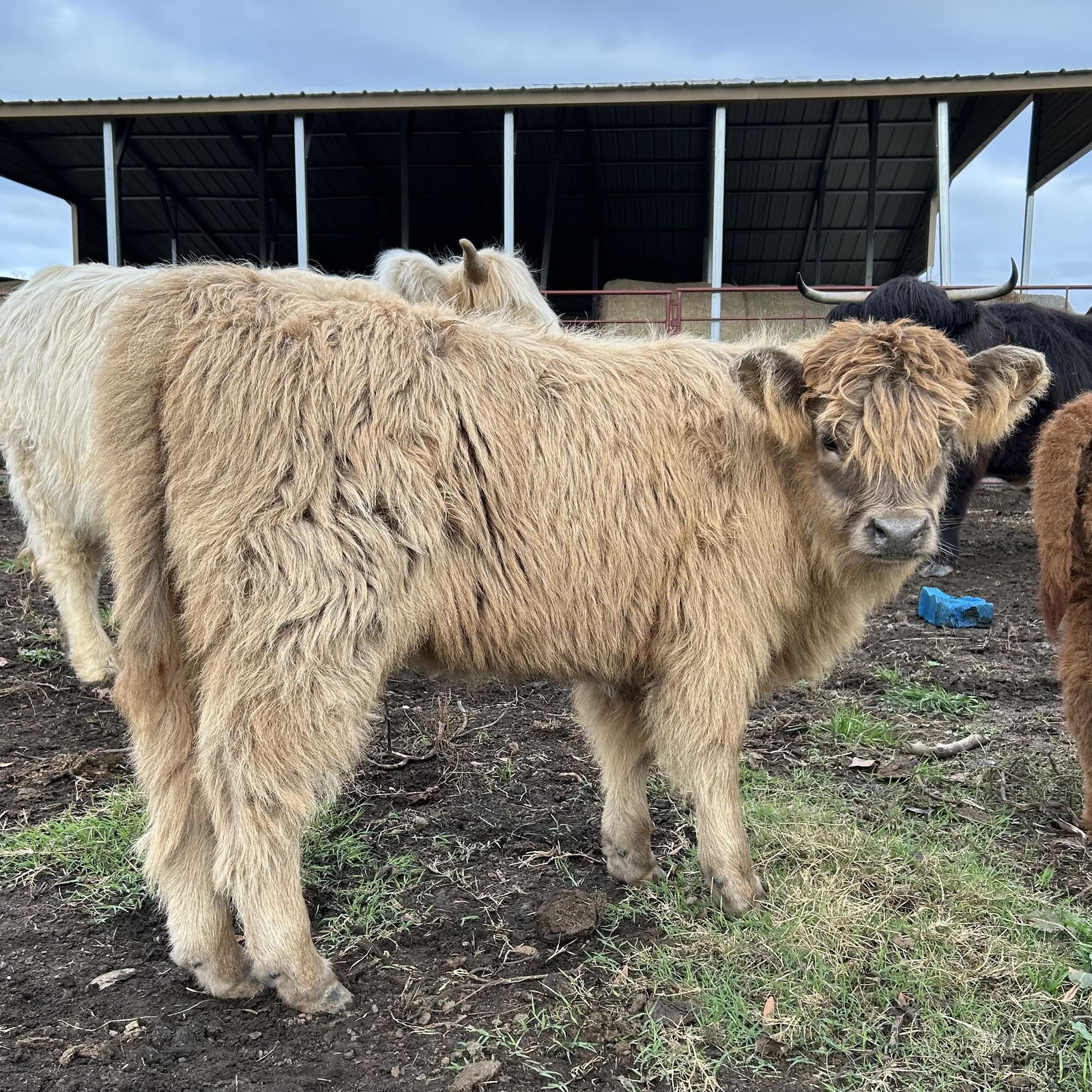
Pygmy Hippopotamus
Choeropsis liberiensis
The Pygmy Hippopotamus (Choeropsis liberiensis) is a fascinating and elusive mammal native to the dense rainforests and swamplands of West Africa, primarily in Liberia, with smaller populations in neighboring countries like Sierra Leone, Guinea, and Ivory Coast. Characterized by its smaller size compared to the common hippopotamus, the pygmy hippo typically weighs between 180 to 275 kilograms (about 400 to 600 pounds) and stands around 75 to 100 centimeters (approximately 2.5 to 3.3 feet) tall at the shoulder. This semi-aquatic animal features a robust, barrel-shaped body, short legs, and a proportionally smaller head with a rounder, more streamlined snout ideal for navigating dense underbrush and water.
Pygmy hippos are adapted to both terrestrial and aquatic habitats and have a unique skin that secretes a natural sunblock fluid, helping to keep them cool and moisturized in their humid environment. Primarily herbivorous, their diet consists of ferns, broad-leaved plants, and fruits, which they forage during the cooler hours of dawn and dusk. Unlike their larger relatives, pygmy hippos tend to be more solitary, opting to travel alone or in small familial groups.
Conservation efforts are critical for this species, as pygmy hippos are currently classified as Endangered by the IUCN. Habitat destruction due to logging, agriculture, and human settlement, along with hunting pressures, pose significant threats to their survival. Ongoing conservation programs aim to protect their natural habitat and promote awareness to secure a future for this remarkable and lesser-known relative of the larger hippopotamus.

 All Species & Breeds
All Species & Breeds
 Highland Cattle
Highland Cattle
 Miniature Donkeys
Miniature Donkeys
 All Species Directory
All Species Directory
 Highland Cattle in Virginia
Highland Cattle in Virginia
 Miniature Donkeys in Texas
Miniature Donkeys in Texas












